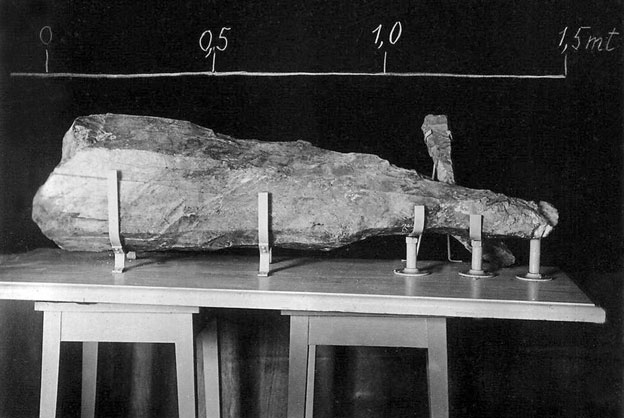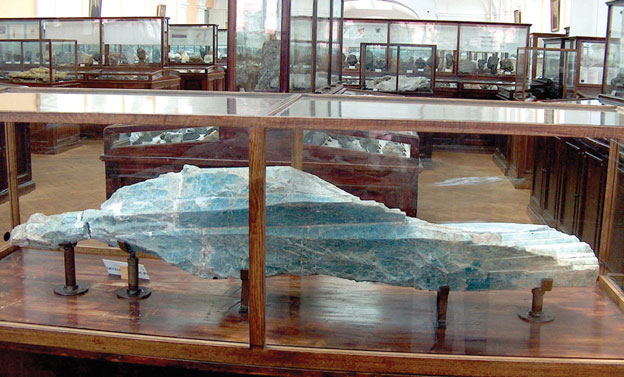BERYL Be3Al2(Si6O18) – the name of the mineral comes from the Greek word “βήρυλλος” – “to shine”.
Beryl is widely distributed in nature, and its crystals can reach impressive sizes. Mohs hardness scale is 8. Opaque beryl crystals are mined as an ore for beryllium. It occurs in hydrothermal deposits in pegmatites, greisens, quartz veins.
The colour of beryl is diverse, from greenish-white to pink. The most valuable are transparent varieties related to jewellery stones. Bright blue aquamarines (from the Latin “aqua marina” – sea water); dark green emeralds (from the Greek “σμάραγδος” – a green stone); yellow heliodors (from the Greek “ἥλιος” – the sun) have been known since ancient times. There are also pink beryl morganite or vorobyevite, rare red bixbite, colourless rosterite (goshenite), dark blue maxis-beryl.
The beryl crystal named “Dolphin” because of its resemblance to the body shape of this mammal was brought to the museum in 1930 by geologist A.K. Boldyrev from the Tigeretskie Belki deposit in Altai.

Beryl crystal ”Dolphin” brought to the museum in 1930
In 1941, the crystal was broken by a beam that fell during the bombing, but then restored and put on display again.

Beryl crystal in the interior of the museum
At the end of the XVIII century, the French natural scientist E.M. Patrin discovered cloudy bluish aquamarine and rose quartz in the Tigeretsky Range region of Altai. In the future, this deposit was called “Tigeretskie Belki”. Here, in the pegmatites of Mount Razrabotnaya, a gem-quality aquamarine crystal 61×15 cm in size was mined, and opaque aquamarine crystals 146 and 127 cm long and weighing to 180 kg were delivered from there, which are exhibited in the Mining Museum of St. Petersburg.